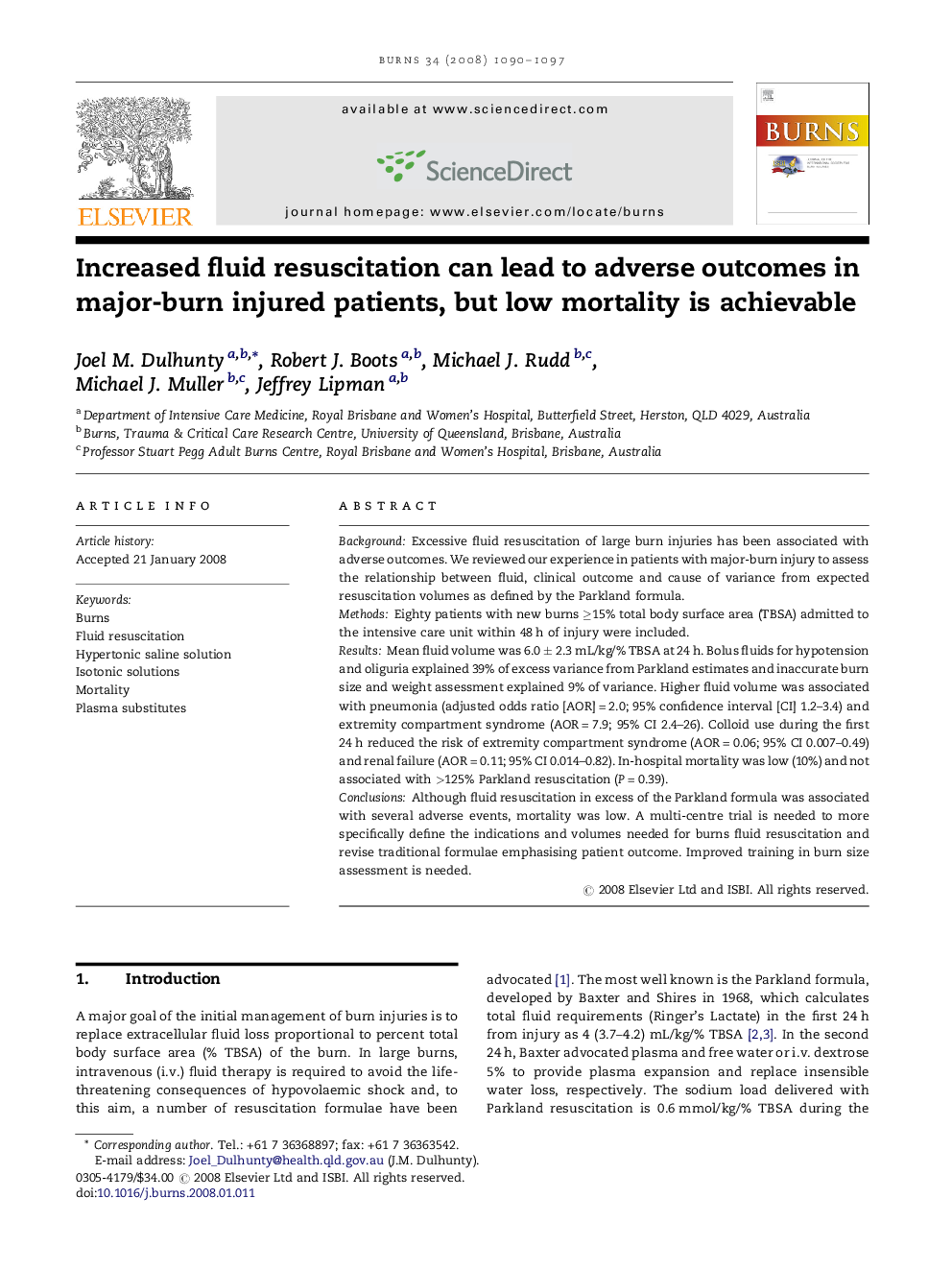| کد مقاله | کد نشریه | سال انتشار | مقاله انگلیسی | نسخه تمام متن |
|---|---|---|---|---|
| 3105717 | 1191692 | 2008 | 8 صفحه PDF | دانلود رایگان |

BackgroundExcessive fluid resuscitation of large burn injuries has been associated with adverse outcomes. We reviewed our experience in patients with major-burn injury to assess the relationship between fluid, clinical outcome and cause of variance from expected resuscitation volumes as defined by the Parkland formula.MethodsEighty patients with new burns ≥15% total body surface area (TBSA) admitted to the intensive care unit within 48 h of injury were included.ResultsMean fluid volume was 6.0 ± 2.3 mL/kg/% TBSA at 24 h. Bolus fluids for hypotension and oliguria explained 39% of excess variance from Parkland estimates and inaccurate burn size and weight assessment explained 9% of variance. Higher fluid volume was associated with pneumonia (adjusted odds ratio [AOR] = 2.0; 95% confidence interval [CI] 1.2–3.4) and extremity compartment syndrome (AOR = 7.9; 95% CI 2.4–26). Colloid use during the first 24 h reduced the risk of extremity compartment syndrome (AOR = 0.06; 95% CI 0.007–0.49) and renal failure (AOR = 0.11; 95% CI 0.014–0.82). In-hospital mortality was low (10%) and not associated with >125% Parkland resuscitation (P = 0.39).ConclusionsAlthough fluid resuscitation in excess of the Parkland formula was associated with several adverse events, mortality was low. A multi-centre trial is needed to more specifically define the indications and volumes needed for burns fluid resuscitation and revise traditional formulae emphasising patient outcome. Improved training in burn size assessment is needed.
Journal: Burns - Volume 34, Issue 8, December 2008, Pages 1090–1097